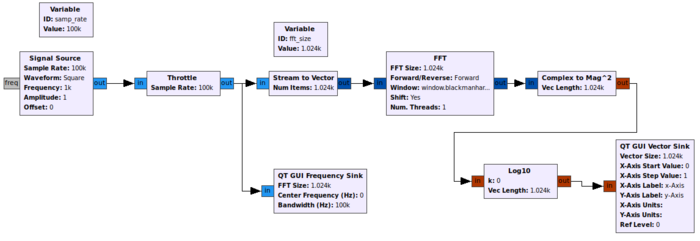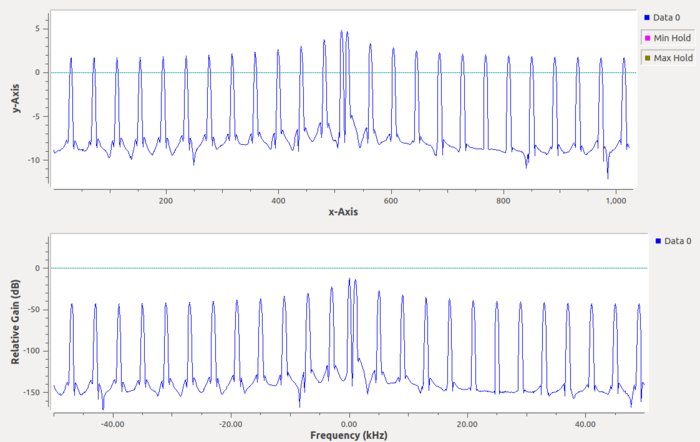Block Template: Difference between revisions
Jump to navigation
Jump to search
No edit summary |
No edit summary |
||
| Line 12: | Line 12: | ||
== Example Flowgraph == | == Example Flowgraph == | ||
Insert description of flowgraph here, then show a screenshot of the flowgraph and the output if there is an interesting GUI. | Insert description of flowgraph here, then show a screenshot of the flowgraph and the output if there is an interesting GUI. Currently we have no standard method of uploading the actual flowgraph to the wiki or git repo, unfortunately. The plan is to have an example flowgraph showing how the block might be used, for every block, and the flowgraphs will live in the git repo. | ||
[[File:Fft-ex.png|700px]] | [[File:Fft-ex.png|700px]] | ||
Revision as of 16:36, 15 July 2019
This is the template for the "Page-per-block Docs". This first section should describe what the block does and how to use it, using however many paragraphs necessary. Note that the title of the wiki page should match the block's name in GRC, i.e. the one defined in the block's .grc file. Look at the FFT Block for a good example.
Parameters
- Param 1
- Description of parameter, provide any tips or recommended values. Note that the name of the parameter above should match the param's label that shows up in grc (e.g. Sample Rate).
- Param 2
- blah blah blah
Example Flowgraph
Insert description of flowgraph here, then show a screenshot of the flowgraph and the output if there is an interesting GUI. Currently we have no standard method of uploading the actual flowgraph to the wiki or git repo, unfortunately. The plan is to have an example flowgraph showing how the block might be used, for every block, and the flowgraphs will live in the git repo.
Source Files
- C++ files
- Complex input
- Real input
- Core algorithms
- Header files
- Complex input
- Real input
- Public header files
- Complex input
- Real input
- Block definition
- GRC yaml

